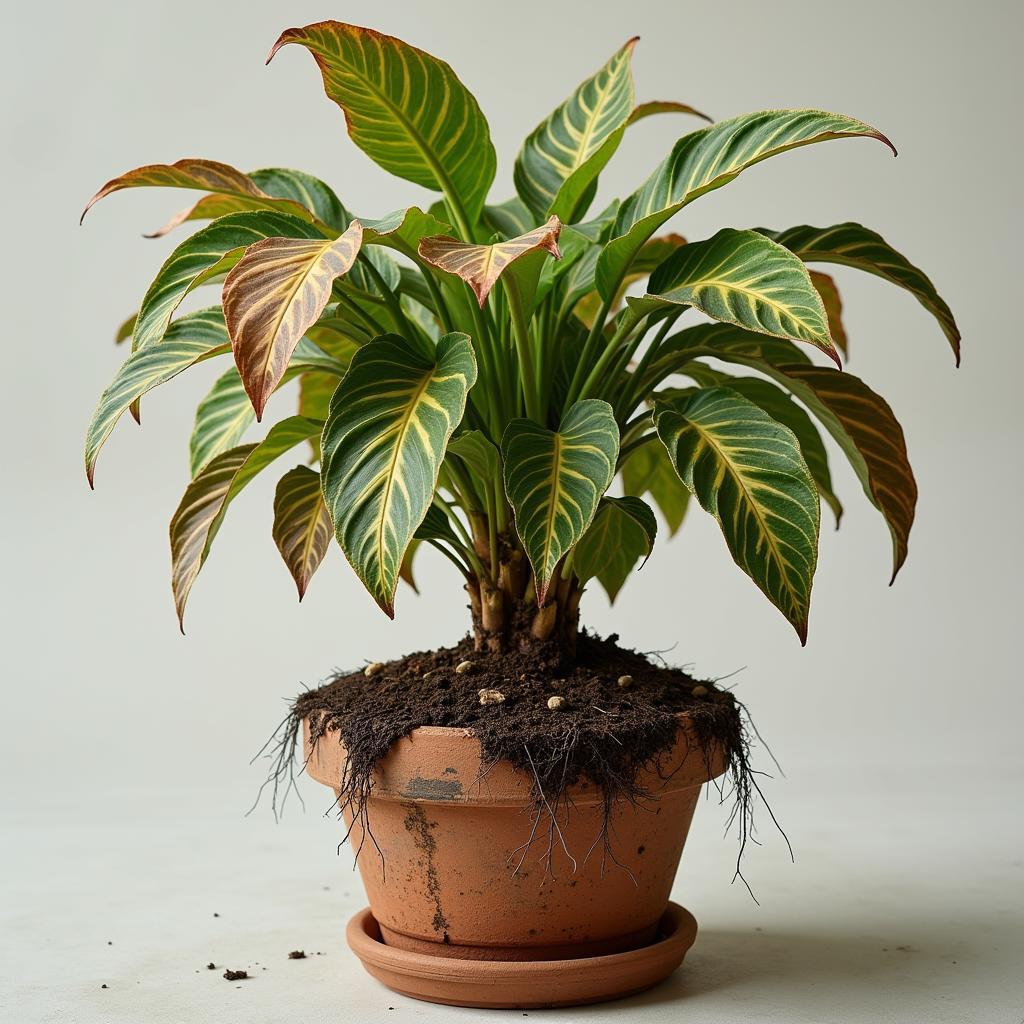Don’t water dead plants. It sounds simple, yet it’s a common mistake that can further harm already struggling greenery. This guide explores why watering dead plants is counterproductive, how to identify if a plant is truly dead, and the steps to take for revival or peaceful acceptance. We’ll cover the signs of overwatering, underwatering, and other common plant problems, and provide solutions to help you nurture your plants back to health or understand when it’s time to let go.
Identifying a Truly Dead Plant
Before you give up on a plant, make sure it’s actually beyond saving. Sometimes, plants play possum, appearing lifeless while dormant roots wait for better conditions. Pull gently on the stem. If it offers resistance, there might be life yet. Check for green tissue beneath the outer layers. A pliable stem, even without leaves, can signal life. Another telltale sign is root health. Healthy roots are firm and white or light brown. Mushy, dark brown or black roots indicate decay. Learn more about plant care with our guide on tending plants.
Signs of Overwatering
Overwatering is a common culprit in plant demise. Soggy soil deprives roots of oxygen, leading to root rot and fungal diseases. Look for these signs:
- Yellowing leaves, especially lower ones
- Mushy stems
- A constantly damp potting mix
- Fungal growth on the soil surface
If you notice these signs, stop watering immediately and allow the soil to dry out completely. You can also try repotting the plant in fresh, well-draining soil.
Signs of Underwatering
Underwatering, on the other hand, presents different symptoms:
- Dry, brittle leaves
- Wilting or drooping foliage
- Soil pulling away from the sides of the pot
While underwatering is often easier to remedy than overwatering, prolonged dehydration can still be fatal. Thoroughly soak the soil until water drains from the drainage holes.
 Underwatered Plant Wilting
Underwatered Plant Wilting
Reviving a Struggling Plant
If your plant isn’t completely dead, there’s hope. Here are some steps you can take:
- Assess the damage: Determine the likely cause of the plant’s decline. Is it overwatering, underwatering, pests, or something else? Even a dead money tree plant can sometimes be saved with proper care. For more insights, check out our guide on dead money tree plant.
- Address the underlying problem: Adjust your watering habits, treat for pests, or repot in fresh soil as needed.
- Provide optimal conditions: Ensure adequate light, humidity, and temperature for your plant species.
- Prune away dead or damaged foliage: This encourages new growth.
- Be patient: It can take time for a plant to recover.
“Patience and observation are key when nursing a plant back to health,” says fictional plant expert Dr. Vivian Holloway, a botanist with 20 years of experience in horticulture. “Don’t expect overnight miracles. Consistent care and attention will yield the best results.”
When to Let Go
Sometimes, despite our best efforts, a plant is beyond saving. Recognizing this can save you time and frustration. If the stem is completely dry and brittle, the roots are decayed, and there’s no sign of green tissue, it’s likely time to say goodbye.
Dealing with Plant Loss
Losing a plant can be disappointing, but it’s a part of the gardening journey. Don’t be discouraged. Learn from the experience, and apply those lessons to your remaining plants. Perhaps you’d like to start fresh with some new additions. If you’re looking for some groundcover options, check out our guide on groundcover boots.
“Every gardener experiences setbacks,” adds Dr. Holloway. “The key is to learn from your mistakes and keep growing. Even experienced gardeners lose plants from time to time. Don’t let it deter you from enjoying the rewards of cultivating a thriving indoor garden.” Consider exploring options like matk plants for a different approach to your indoor garden.
Conclusion
Don’t water dead plants. Instead, focus on identifying the underlying problem and taking appropriate action. Whether your plant is salvageable or not, remember that gardening is a continuous learning process. Embrace the challenges and enjoy the journey. By understanding the signs of a struggling plant and taking proactive steps, you can cultivate a thriving indoor oasis. Perhaps even consider a flower box empty to start anew!
FAQ
-
How can I tell if my plant is dormant or dead? Check for signs of life such as green tissue beneath the outer layers, root firmness, and stem pliability.
-
What are the common signs of overwatering? Yellowing leaves, mushy stems, consistently damp soil, and fungal growth are indicators of overwatering.
-
How can I revive an underwatered plant? Thoroughly soak the soil until water drains from the drainage holes.
-
What should I do if my plant has root rot? Repot the plant in fresh, well-draining soil and remove any affected roots.
-
Is it okay to prune dead leaves from a struggling plant? Yes, pruning dead or damaged foliage can encourage new growth.
Need Help?
For any assistance or further questions, please contact us:
- Phone Number: 0902476650
- Email: [email protected]
- Address: 139 Đ. Võ Văn Kiệt, Hoà Long, Bà Rịa, Bà Rịa – Vũng Tàu, Việt Nam
Our customer support team is available 24/7.





